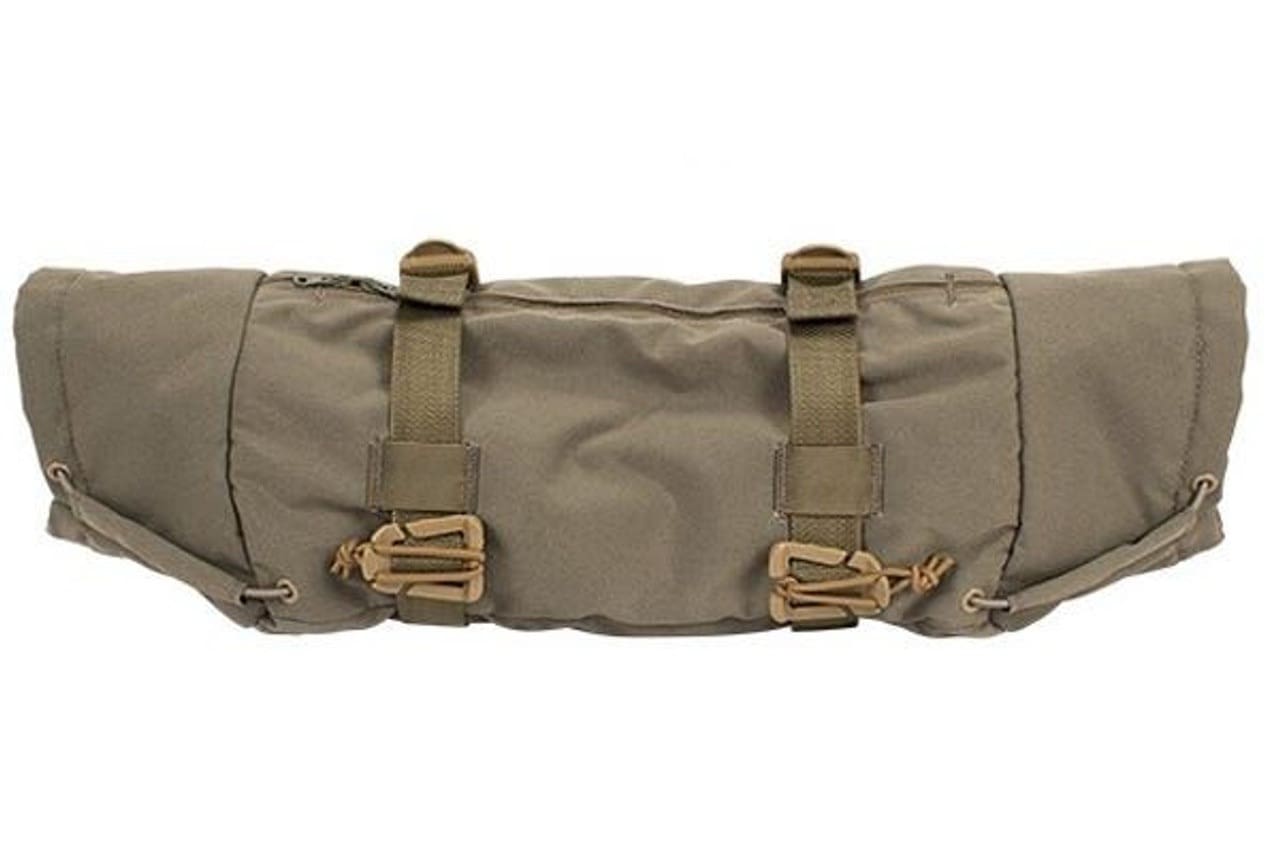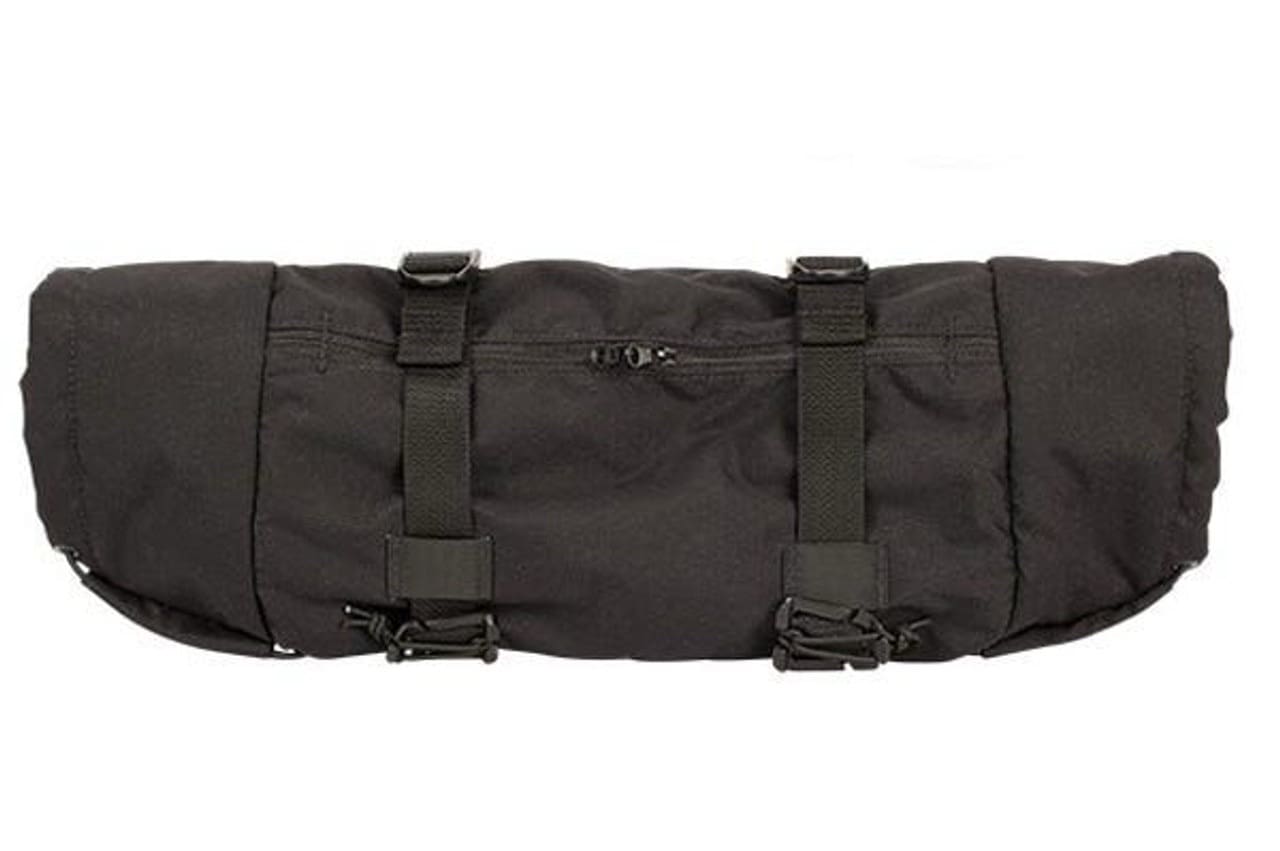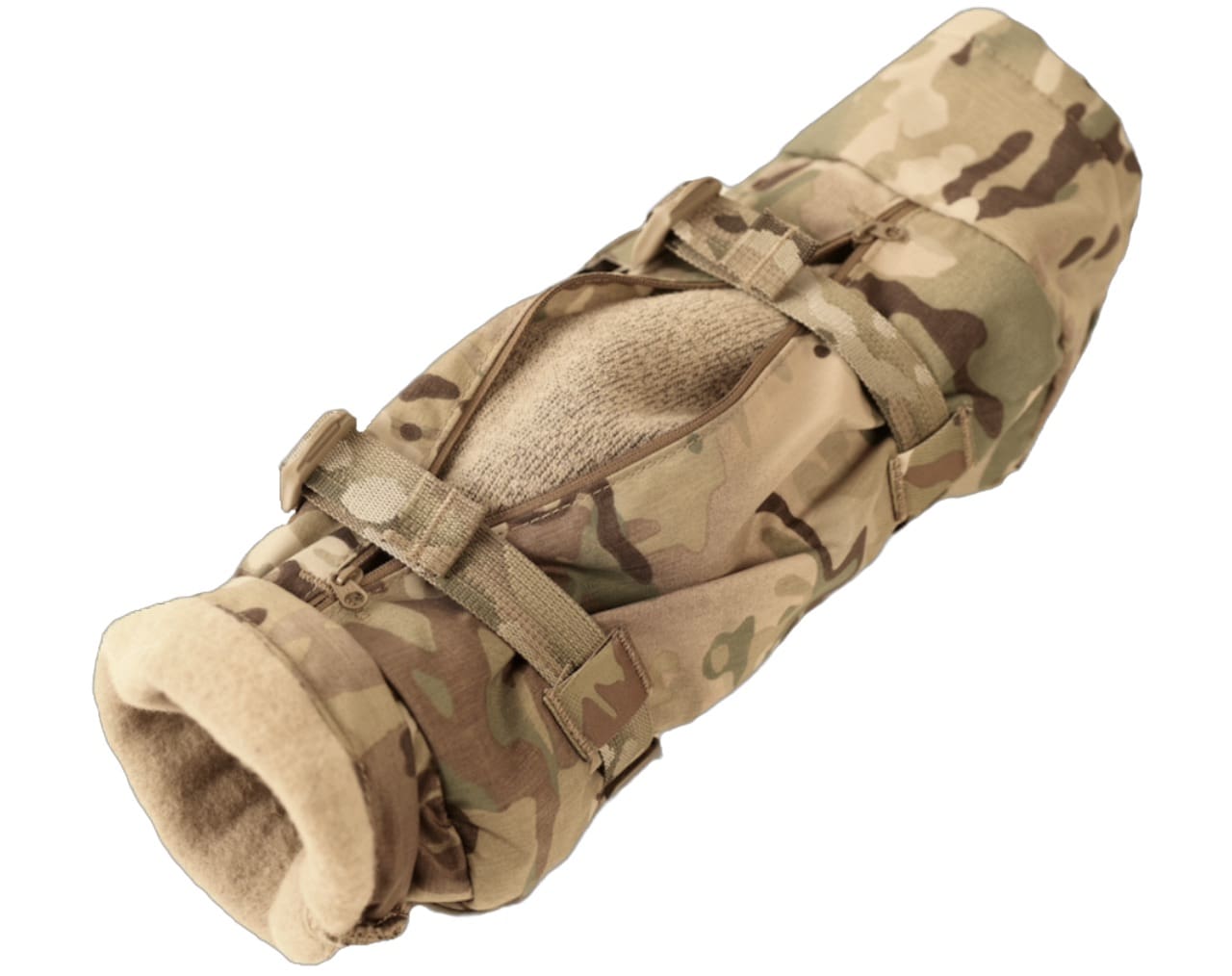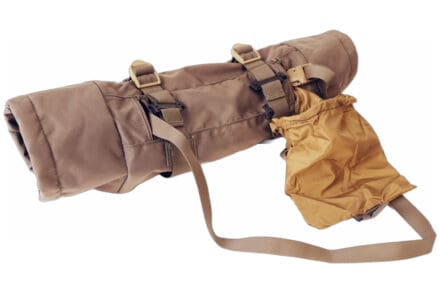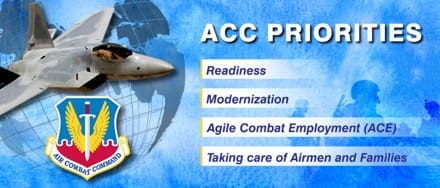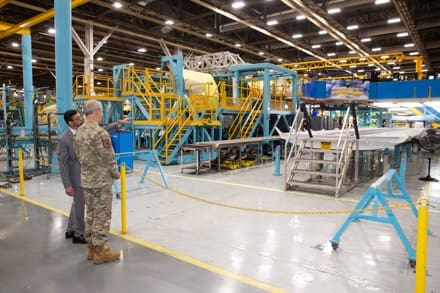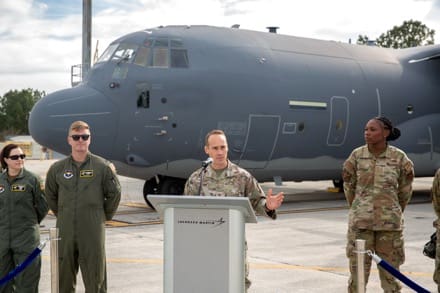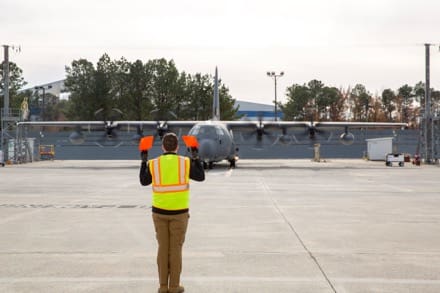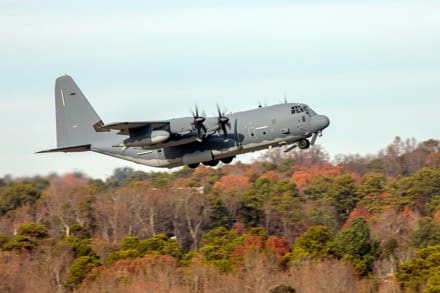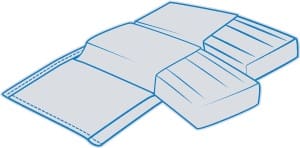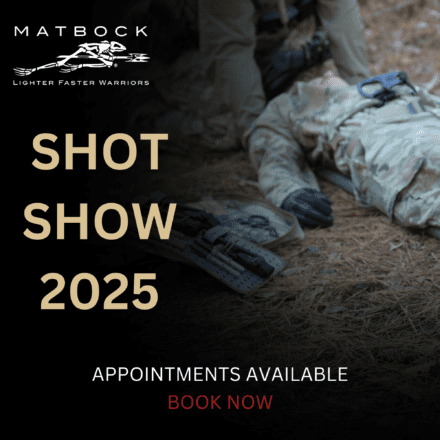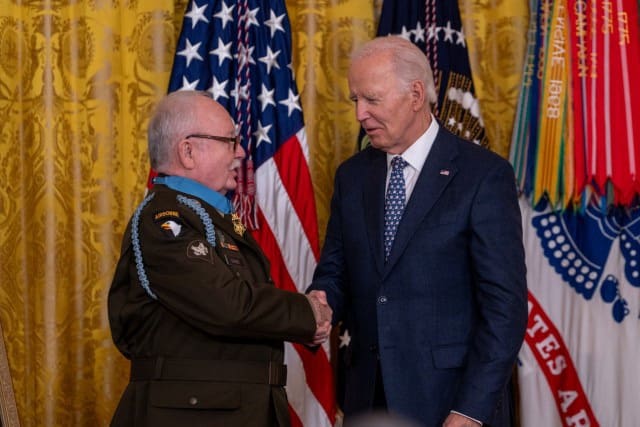
WASHINGTON — At a White House ceremony on Friday, January 3, 2024, President Joe Biden presented Medals of Honor to seven Soldiers who served in either the Korean War or the Vietnam War.
Among the Soldiers honored were Pvt. Bruno R. Orig, Pfc. Wataru Nakamura, Cpl. Fred B. McGee, Pfc. Charles R. Johnson and Gen. Richard E. Cavazos. All served in the Korean War and received the medal posthumously. Family members accepted the decoration on their behalf.
From the Vietnam War, both Capt. Hugh R. Nelson Jr. and Spc. 4th Class Kenneth J. David were decorated. Nelson received the medal posthumously, while David, the only living recipient, accepted the medal in person.
“I’m deeply privileged to honor seven American heroes,” Biden said. “That’s not hyperbole. These are genuine, to their core, heroes. Heroes of different ranks, different positions, and even different generations. But heroes who all went above and beyond the call of duty. Heroes who all deserve our nation’s highest and oldest military recognition, the Medal of Honor.”

Pvt. Bruno R. Orig
Born in Honolulu, Hawaii, in 1930, Orig enlisted in the Army in 1950. On February 15, 1951, while serving with Company G, 23rd Infantry Regiment, 2nd Infantry Division in the vicinity of Chipyong-ni, Korea, Orig returned from a mission to find many of his fellow Soldiers wounded in an ongoing enemy attack.
Orig administered first aid to his fellow Soldiers and remained exposed to enemy fire. With the assistance of other Soldiers, Orig removed the wounded to a place of safety.
When Orig noticed that all but one of a machine-gun crew had been wounded, he volunteered to man the weapon. Orig was so effective on the machine gun that a withdrawing friendly platoon was able to move back without a single casualty.
Orig continued to inflict heavy casualties on the enemy until the company positions were overrun. Later, when the lost ground was recaptured, Orig was found dead beside his weapon, though the area in front of his gun was littered with enemy dead. He was 20 years old at the time.
“Bruno saw his fellow Soldiers were wounded and stranded under enemy fire,” Biden said. “Without hesitation, he ran out to rescue them, giving his own life to save the lives of his brothers in arms. That’s valor. That’s the definition of valor.

Pfc. Wataru Nakamura
Nakamura was born in Los Angeles, California, in 1921.
“After an attack on Pearl Harbor, he was forced to live in an internment camp, like so many other Japanese Americans,” Biden said. “But still, he signed up to serve our nation during World War II and the Korean War. During his last mission in May of 1951, single handedly he defended his unit from enemy attack, fighting until he was killed by a grenade.”
While serving with Company I, 38th Infantry Regiment, 2nd Infantry Division in the vicinity of P’ungch’on-ni, Korea on May 18, 1951, Nakamura volunteered to check and repair a communications line between his platoon and the command post. During that mission, he came under fire by an enemy force which had surrounded friendly positions and were threatening to break the company defense lines.
Without waiting for help, Nakamura rushed the enemy with his bayonet engaged. He singlehandedly attacked and destroyed a hostile machine-gun nest and drove the enemy from several of the bunkers they had captured. When his ammunition was depleted, he withdrew while under enemy fire.
Nakamura then met an ammunition party ascending the hill. After briefing the officer in charge, Nakamura rearmed himself and, covered by the fire of the officer and two fellow Soldiers, returned to the attack. He killed three of the enemy in one bunker and killed and seriously wounded another in the last enemy-held bunker. Continuing to press the attack, he fell mortally wounded by an enemy grenade. He was 29 years old at the time.

Cpl. Fred B. McGee
McGee was born in Steubenville, Ohio, in 1930. He enlisted in the Army in 1951 and served in Korea from January to November 1952.
“[He was] a Midwesterner, a steel worker and a gunner in one of the first integrated army units of the Korean War,” Biden said. “Fred embodied the very best of our country. In June 1952, his unit was attacked. They took casualties. They were ordered to fall back. But Fred refused to leave until he helped every wounded Soldier evacuate.”
While serving near Tang-Wan-Ni, Korea on June 16, 1952, as a gunner on a light machine gun in a weapons squad, McGee delivered a heavy volume of supporting fire from an exposed position despite intense enemy machine-gun and mortar fire directly on his location.
Though forced to move his gun several times, McGee continued to support the assault and give covering fire to the assault elements of his platoon. When his squad leader was wounded, together with several other members of his squad, McGee assumed command and moved the squad even farther forward to a more exposed position in order to deliver fire on an enemy machine gun. When his own machine gunner was mortally wounded, McGee again took over the gun. He directed his squad to withdraw and voluntarily remained behind to help evacuate the wounded and dead.
Though wounded in the face, McGee exposed himself to danger by standing straight up in enemy machine-gun and mortar fire while attempting to evacuate the body of the company runner. Forced to abandon the body, he aided a wounded man to be moved to the rear and safety through a huge volume of enemy mortar and artillery fire.
At the time of his combat action, McGee was 22 years old. After the Korean War, McGee worked in the steel industry for more than four decades. He died in 2020, in Pittsburgh, Pennsylvania.
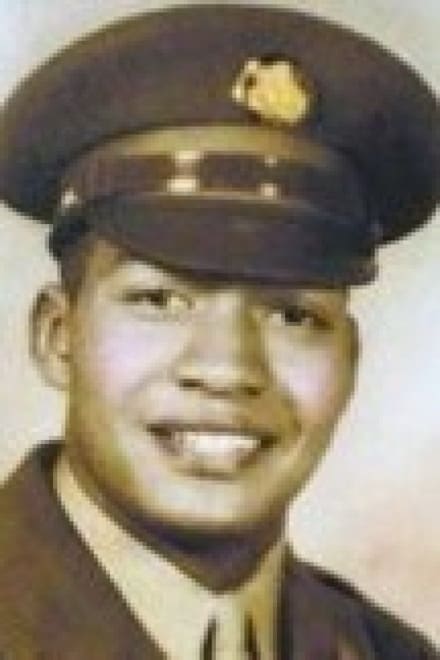
Pfc. Charles R. Johnson
Johnson was born in Sharon, Connecticut, in 1932, and enlisted in the Army in 1952.
“Growing up, in the words of Charlie’s high school classmates, he was a heck of a football player,” Biden said. “Well back in 1952, Charlie signed up to serve in Korea, trading his jersey for a uniform. During one battle, he gave his life to defend a bunker full of his wounded Soldiers. His valor saved 10 men, including an old high school classmate.”
When Chinese forces attacked his unit at Outpost Harry in Korea, June 11-12, 1953, Johnson was serving as a rifleman with Company B, 15th Infantry Regiment, 3rd Infantry Division. During the battle, an overwhelming number of Chinese troops assaulted the trenches and bunkers that were defended by Johnson and his squad.
Johnson was wounded from a direct artillery hit on his bunker and subsequently from a hand grenade thrown inside the bunker. Even though he was injured, he administered first aid to those more seriously injured than himself. Johnson dragged a wounded Soldier to the safety of a secure bunker while stopping intermittently to aid injured Soldiers and kill several enemy troops in hand-to-hand combat.
After departing the safety of the second bunker, he conducted a search for weapons and ammunition then returned to rearm everyone. After acknowledging the untenable situation, he and his fellow Soldiers found themselves in, Johnson exited the bunker and placed himself between the enemy and his injured comrades. He told them he’d hold off the enemy forces as best as he could. He was killed by enemy forces while fighting to defend his position and to protect his wounded comrades.
At the time of his combat action, Johnson was 19 years old.

Gen. Richard E. Cavazos
Born in Kingsville, Texas, in 1929, Cavazos earned his commission in 1951, after having served in the Reserve Officer Training Corps at Texas Tech University.
“Richard led his men through a difficult and deadly mission in enemy territory,” Biden said. “Eventually, he was ordered to retreat, but he stayed. He stayed rescuing wounded Soldiers one by one, until every one of them was evacuated. Richard went on to serve for three decades in the army, becoming … the country’s first Hispanic four star general.”
At the time of the combat action which earned him the Medal of Honor, Cavazos was a first lieutenant serving as the company commander of Company E, 2nd Battalion, 65th Infantry Regiment, 3rd Infantry Division in the vicinity of Sagimak, Korea.
On the night of June 14, 1953, Cavazos led his company in a raid on an entrenched enemy outpost with the mission of destroying the personnel and installation there. During the initial attack, he led his men through enemy mortar and artillery fire. Upon entering the trenches, close combat ensued during which Cavazos directed heavy fire on the enemy and their positions.
When an enemy mortar and artillery barrage hit his position, Cavazos withdrew the company and regrouped his men. Twice more he led his men through intense enemy fire in assaults on the enemy position, destroying vital enemy fortifications and personnel.
When ordered to withdraw his company, Cavazos complied but remained alone on the enemy outpost to search for missing men. Although exposed to enemy fire, he located five battle casualties and evacuated each, one by one, to a point on the reverse slope of a nearby hill where they could be safely recovered by friendly forces.
After, he returned to the battlefield where he found a small group of men who had become separated from the main assaulting force and personally led them to safety. When informed that there were still men missing, Cavazos again returned to the scene of the battle. There, he located and led another small group of men to safety. He then made two more unassisted trips to the battlefield searching for missing Soldiers.
It wasn’t until he was satisfied that the battlefield was cleared on the morning of June 15, that he allowed treatment of his own combat wounds.
Cavazos retired from the Army in 1984, after attaining the rank of general. At the time of his combat action, he was 24 years old. He died in 2017, in San Antonio, Texas.
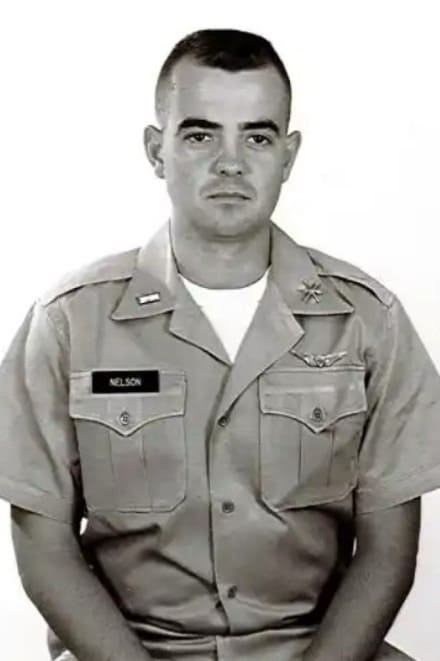
Capt. Hugh R. Nelson, Jr.
Born in 1937, in Charlotte, North Carolina, Nelson entered the Army in 1963.
“He was just 28 years old when he and his crew were shot down in Vietnam,” Biden said. “Hugh freed his men who were trapped in the wreckage. Then as the enemy began to attack, he used his body as a shield to protect them. It cost him dearly. It cost him his life. Hugh’s commanding officer called it the ultimate act of self-sacrifice, which it was.”
While serving with the 114th Aviation Company (Airmobile Light) on June 5, 1966 near Moc Hoa, Republic of Vietnam, Nelson was the acting aircraft commander of an armed UH-1 Iroquois helicopter on a search and destroy reconnaissance mission when it was struck by enemy fire that rendered the aircraft virtually uncontrollable.
The pilot and Nelson were able to crash land the aircraft without lateral controls. At some point after the crash, Nelson exited the aircraft and went to the aid of his wounded comrades.
Proceeding to the other side of the aircraft, Nelson found his dazed and wounded crew chief still trapped inside. After removing the specialist and placing him on the ground, he climbed into the severely damaged helicopter to assist the door gunner who was still strapped inside and unable to move.
While Nelson tried to free his comrade, the insurgents engaged the aircraft with automatic rifle and small arms fire. Despite the enemy fire and being hit, he was able to free the trapped door gunner. Upon removing the wounded door gunner from the aircraft, he forced the specialist to the ground and used his own body as a shield to cover his comrade from the enemy fire.
While shielding the door gunner, Nelson was hit several times by enemy fire and was killed in action while saving the life of his comrade. His sacrifice allowed the wounded door gunner to use a smoke grenade to signal for supporting aircraft. When those aircraft responded, they were able to prevent the insurgents from advancing on the downed aircraft. They also were able to rescue the three wounded crew members.
At the time of his combat action, Nelson was 28 years old.

Spc. 4th Class Kenneth J. David
Born in 1950, David entered the Army in 1969.
On May 7, 1970, David was serving as a radio-telephone operator with Company D, 1st Battalion, 506th Infantry, 101st Airborne Division, near Fire Support Base Maureen, Thua Thien Province, Republic of Vietnam.
At that time, David’s company came under an intense attack from a large hostile force. The enemy’s initial assault mortally wounded the company’s platoon leader and resulted in numerous other casualties. Upon the initial assault, David handed his radio to his platoon sergeant and moved forward to the defensive perimeter, where he unleashed a barrage of automatic weapons fire on the enemy.
From this location, David resisted all enemy efforts to overrun his position. Realizing the impact of the enemy assault on the wounded who were being brought to the center ofthe perimeter, he moved to a position outside of the perimeter while continuing to engage the enemy.
Each time the enemy attempted to concentrate its fire on the wounded inside the perimeter, David would jump from his position and yell to draw the enemy fire away from his injured comrades and back to himself.
Refusing to withdraw in the face of the concentrated enemy fire now directed toward him, David continued to engage the enemy. Although wounded by an exploding satchel charge and running low on ammunition, he tossed hand grenades toward the attackers to counter their fire.
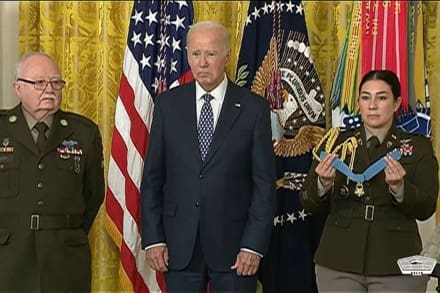
The unit’s medic, realizing that David had been injured, moved to his position to provide aid, but David assured him that he was okay and continued to fight on.
David’s actions continued to draw the enemy fire away from the incoming medevac helicopters, which allowed the wounded to be safely evacuated. After allied reinforcements fought their way to his company’s position, David carried a wounded comrade to a sheltered position. He then returned to the contact area and continued to engage the enemy and provide covering fire for the wounded until the enemy broke contact and fled, at which point he too was medically evacuated.
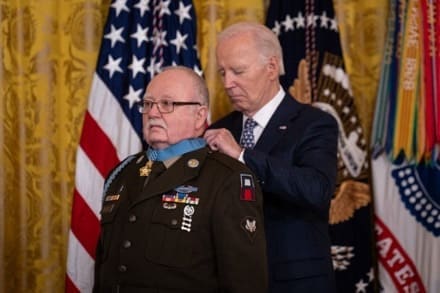
At the time of his combat actions, David was 20 years old.
“[Ken] couldn’t and wouldn’t give up,” Biden said. “Instead, he shouted and fired his weapon to attract attention to him, away from others and away from the wounded men. Imagine that courage. ‘Come get me. Come get me. Don’t get those folks.’ That’s selflessness. Ken, I want to say to you, and I wish I could say to every man we’re honoring today: you’re a hero, a genuine hero, a flat out, straight-up American hero. And we owe you. The families owe you.”
Since concluding his service in Vietnam, David has spent 39 years working for Disabled American Veterans in Ohio, where he now serves as the adjutant treasurer.
“[At] our chapter back here, we just spent $3,000 in food for homeless veterans and veterans in need for the Christmas holidays,” David said. “We get used scooters and wheelchairs …. donated to us, and we, in turn, give them out, no charge, [to] whoever needs them. We do what we have to do to help the veterans in our community … because we have to help our brothers.”
David said he frequently remembers the men he knew who didn’t come home alive from Vietnam, saying he thinks of them as friends. He said he keeps biographies of those men in a book in his truck.
“That’s my way of coping with my stress,” he said. “They were my friends, a lot of times I call them kids, because we were all kids at that time. But we knew the way they walked, we knew the way they talked, their heartbeat, and we would do anything for each other in any situation.”
David is already the recipient of the Distinguished Service Cross, which he received in 1971, for his service in Vietnam. But he said the Medal of Honor will help him be a better advocate for the needs of veterans like himself.
“With the cross I was able to use the award to help more veterans, because people listen to me,” he said. “Now that I’m receiving the Medal of Honor, I will have more power to help more veterans, in my opinion, because I think people will listen to me more because of the award.”
Serving veterans, he said, continues to be his duty.
“I will never forget my friends and my veterans in my county up here,” he said. “That’s my goal for the rest of my life now.”
As Biden closes out his term as commander in chief, he said it’s been the greatest honor of his life to lead the world’s greatest military.
“They’re the finest military in the history of the world,” he said. “Today we award these individuals a Medal of Honor. We can’t stop here. Together as a nation, it’s up to us to give this medal meaning, to keep fighting, to keep fighting for one another, for each other, to keep defending everything these heroes fought for and many of them died for: the ideals of America, the freedom we cherish, the democracy that has made our progress possible.”
The United States, Biden said, was built on an idea, rather than on geography, ethnicity or religion.
“We are the only nation based on an idea,” he said. “The idea is that we hold these truths to be self-evident, all men and women are created equal [and] deserve to be treated equally throughout their entire lives. We haven’t always lived up to it, but we’ve never, ever, ever walked away from it. Today we must say clearly, we never, ever, ever will.”
By C. Todd Lopez, DOD


